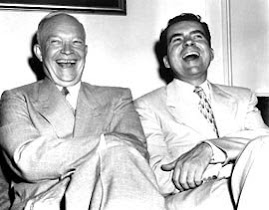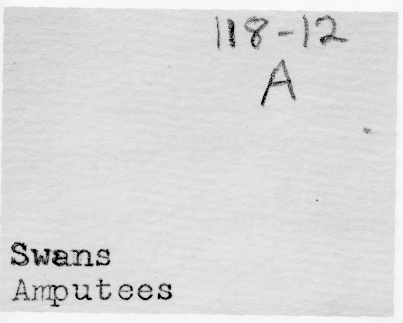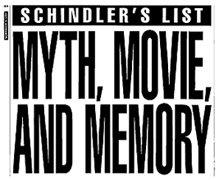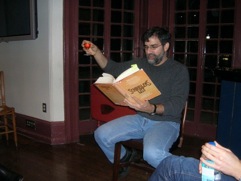 At Stanford University in the fall of 2007, Greg Niemeyer taught a lecture course on the history of computing. Stanford is the most aggressive member of a consortium of American universities contributing digital audio (and some video) recordings to an “academic” space reserved by Apple through the easy interface with its media servers, ITunes; the educational project is called “ITunesU.” Niemeyer has taught courses on digital art in public spaces, computer animation, and one called “The Illusion of Life” (on CG animation and web development using Flash). He has self-consciously formulated techniques for instruction; his lectures are full of charming, defamiliarizing analogies between computing and life lived everyday in Real Time. That fall he lectured on open souce, the potential of the web, and “The History and Invention of Computers.” Here is how the latter lecture began:
At Stanford University in the fall of 2007, Greg Niemeyer taught a lecture course on the history of computing. Stanford is the most aggressive member of a consortium of American universities contributing digital audio (and some video) recordings to an “academic” space reserved by Apple through the easy interface with its media servers, ITunes; the educational project is called “ITunesU.” Niemeyer has taught courses on digital art in public spaces, computer animation, and one called “The Illusion of Life” (on CG animation and web development using Flash). He has self-consciously formulated techniques for instruction; his lectures are full of charming, defamiliarizing analogies between computing and life lived everyday in Real Time. That fall he lectured on open souce, the potential of the web, and “The History and Invention of Computers.” Here is how the latter lecture began:Can you hear me now? We’re all clear? So before we were trying to untangle our cables here, and that worked out all right, so now we have the microphone ready in case you do have questions, so it’s all open. And, we were talking about how nice it would be if the microphones were wireless, then you wouldn’t have the need to untangle them. But the problem is, if you have wireless connections everywhere they have other ways of tangling up that are far more complex, and then you can’t look at the tangled mess and untangle it with your bodies. So there we have a problem of serious abstraction. Today we will talk about the conditions that give rise to the invention – sorry – of computers in the past 100 years or so – 200 years – actually we’re going to go way back to see where the origins of abstractions lie and [pause] we’re going to have several talks about – [5 second pause, fiddles with computer] – the origins of computers, the conditions the needed to be in place for the computer to work…and it doesn’t always work [fiddles with computer], as in this case right here [pause, silence, fiddles with computer] … and we’ll know more about how complex the system really is… [pause, silence, fiddles with computer, inaudible talk with assistant] .. um, [to assistant], this one is still starting up here, very funny. Huh? [inaudible remark by teaching assistant] I think it’s nonsense, nonsense here. So do we get a picture? [to class] Okay, just ignore that image that says “Starting Mac OS” there for some reason, and we’ll see if we can get what we need to get. [20 seconds of silence] Wow! This thing is really confused. [30 more seconds of silence] Can we find anything? [20 more seconds of silence] So weird. A minute ago it was fine. [10 seconds of silence] Hope it works! [5 seconds of silence] Oh this doesn’t look good at all. [5 seconds of silence] So I made this beautiful application for you guys [pause] and [pause] it’s not working so well. Let’s try it on your computer…. What’s going on? Guess what? One computer doesn’t start up and the other doesn’t want to connect. Well, the topic of today is abstraction. And this is important because you can’t do anything with the computer unless you have a symbolic system in place. Language is a classic symbolic system….
On that day, at least, this was a course about new media but its mode did not at all participate; as a form it might have occurred somewhere in the middle of the history of the development of the computer, rather than at its current endpoint – which is to say, there was nothing new here. As the lecturer struggled to use a computer in narrating its history, he made almost nothing of the juxtaposition and yet that was what every student was thinking about – in fact, I would guess, could not help from working through.
 The necessary multi-tasking, of which, one easily imagines, Niemeyer normally excels, did not penetrate the form of the lecture; the narrative goal was straight, history was teaching. No adaptation was made to perform the failure of the history of computers; it was simply presented after some delay, diagrams and symbols hand drawn on a blackboard (Stanford lecture halls still have blackboards), and a PowerPoint presentation, enabled by Flash, was reverse-engineered back into handwriting, with the effect being, so far as I (a later listener) could tell, no difference at all. Nonetheless, “[t]he topic of today is abstraction,” a lesson oblivious to the unabstract failures all around.
The necessary multi-tasking, of which, one easily imagines, Niemeyer normally excels, did not penetrate the form of the lecture; the narrative goal was straight, history was teaching. No adaptation was made to perform the failure of the history of computers; it was simply presented after some delay, diagrams and symbols hand drawn on a blackboard (Stanford lecture halls still have blackboards), and a PowerPoint presentation, enabled by Flash, was reverse-engineered back into handwriting, with the effect being, so far as I (a later listener) could tell, no difference at all. Nonetheless, “[t]he topic of today is abstraction,” a lesson oblivious to the unabstract failures all around.






 "I teach horizontally, meaning that while I might begin with a fixed idea of what I'm going to teach that day, I let it drift rhizomatically way off topic, often pulling it back when it gets too far. I rely on non-fixed materials to teach this way; the whole world is at my fingertips. Should I go off on a tangent about John and Rauschenberg and their love relationship as expressed in Rauschenberg's bed, an image of that bed is always a click away. From there, we can head anywhere into the non-fixed universe, be it film, text or sound. And of course, that always takes us elsewhere. As Cage says, 'We are getting nowhere fast.'"
"I teach horizontally, meaning that while I might begin with a fixed idea of what I'm going to teach that day, I let it drift rhizomatically way off topic, often pulling it back when it gets too far. I rely on non-fixed materials to teach this way; the whole world is at my fingertips. Should I go off on a tangent about John and Rauschenberg and their love relationship as expressed in Rauschenberg's bed, an image of that bed is always a click away. From there, we can head anywhere into the non-fixed universe, be it film, text or sound. And of course, that always takes us elsewhere. As Cage says, 'We are getting nowhere fast.'" 

 that anyone has yet got the imaginative measure of that terrifying day six years ago. Certainly our Tolstoy has not crawled out of the rubble. The closest we have, Don DeLillo, succeeded as an essayist-journalist ("In the Ruins of the Future: Reflections on Terror and Loss in the Shadow of September,” Harper’s, December 2001) but, to my mind, failed as a novelist ("Falling Man"). One reason, perhaps, is that the remembered emotion was instantly buried under a pile of cultural junk.' - Tod Gitlin in his review of Susan Faludi's The Terror Dream (written for
that anyone has yet got the imaginative measure of that terrifying day six years ago. Certainly our Tolstoy has not crawled out of the rubble. The closest we have, Don DeLillo, succeeded as an essayist-journalist ("In the Ruins of the Future: Reflections on Terror and Loss in the Shadow of September,” Harper’s, December 2001) but, to my mind, failed as a novelist ("Falling Man"). One reason, perhaps, is that the remembered emotion was instantly buried under a pile of cultural junk.' - Tod Gitlin in his review of Susan Faludi's The Terror Dream (written for 






























